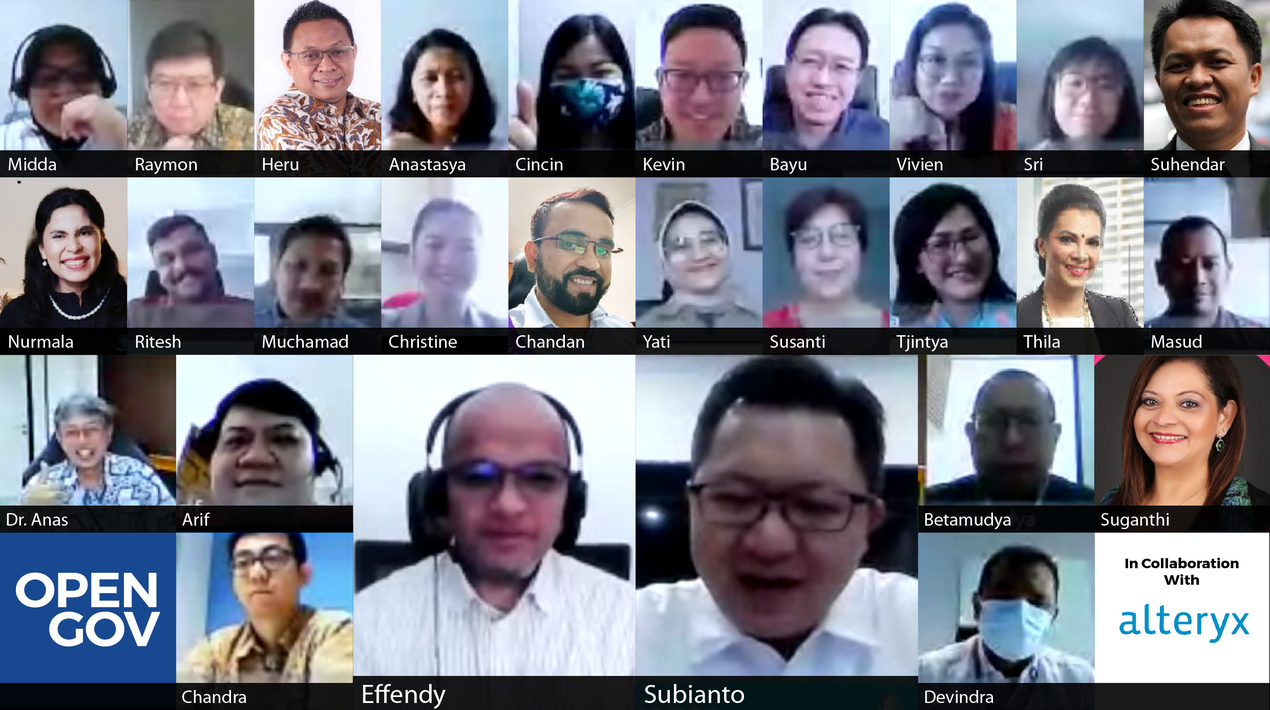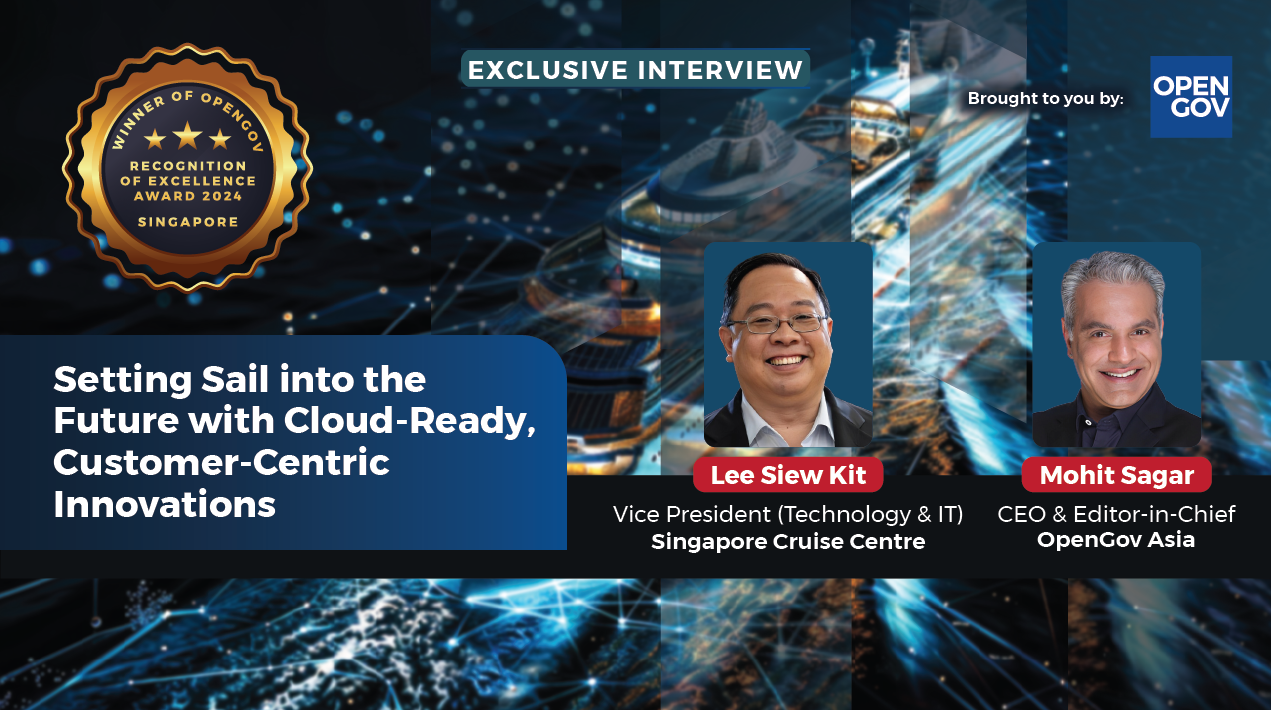
The role of Chief Financial Officers (CFOs) has moved beyond traditional financial and accounting supervision. The office of finance now tackles complexities such as heightened governance, high stakes and strict compliance requirements daily.
CFOs now operate in the centre of the organisation delivering relevant insights on business performances that underpin and guide the entire company functioning. They are increasingly becoming key advisers to business, where the critical need is for making near real-time, data-enabled decisions.
It is imperative to develop advanced forecasting capabilities and new finance management techniques that provide the ability to take analytics capability and data beyond the finance function to support the enterprise holistically.
Along with developing new talent and skillsets, and through investment in technology, using analytics in finance enables CFOs and finance teams to generate a competitive advantage and growth for the entire enterprise.
In this context, the priority must be to make data more accessible to everyone across the organisation. Increasing accessibility of data sources, reducing time collecting and preparing data sets for analysis and integrating analytics into outputs to create transformative business outcomes become the need of the hour.
Analytic Process Automation (APA) enables easy data sharing, automates tedious processes and unlocks predictive insights that drive timely attainment of goals. It eliminates the need to use multiple discreet tools to manage data, processes and people, making it easier and faster for governments to take care of the citizens.
APA is an effective tool for the public sector industry to track and fight the pandemic outbreak, improve data accountability, increase transparency in procurement and facilitates effective disaster recovery and relief.
By intelligently automating the hundreds of repetitive and complex analytic processes, the finance team could save hours of manual work and be able to spend more time on delivering vital outcomes. On top of that, the accuracy and flow of data would significantly be improved in its operation as APA streamlines entire data-driven processes in a preferred consumption format.
The full visibility of data across key financial management systems enables every function in the finance vertical to take advantage of data and easily collaborate across departments, where the analytic effort can be shared and reused.
Knowing this, the core question remains: how can CFOs and the finance team leverage Analytic Process Automation without dependencies on the IT department?
This was the focal point of the OpenGovLive! Virtual Breakfast Insight held on 08 June 2021. The goal was to impart knowledge on the democratisation of data and analytics in the office of finance and best practices to achieve a culture of analytics, upskilling of employees and service efficiency.
The session served as a great peer-to-peer learning platform to gain insights and practical to implement Analytic Process Automation to enable more efficient data processing while reducing the complexity and cost.
Digital Transformation Within the Office of Finance

To kickstart the session, Mohit Sagar, Group Managing Director and Editor-in-Chief at OpenGov Asia delivered the opening address.
Mohit acknowledged that life in financial organisations is tough. Financial officers are juggling many roles, responsibilities and requirements. Not only do they need to understand the numbers, but they are supposed to make sense out of those numbers.
At the same time, technology is moving so fast and comes at a significant cost. Previously considered a somewhat unnecessary expense, tech has now become the backbone of every business. In these current times, organisations welcome technology as an investment.
Along with the rise in technologies, more data than ever before is being collected. But in and of itself, data can do nothing. Mohit emphasised users must fully understand what data can do for them. Data must be unlocked to achieve better business outcomes.
Most people do not know where to start – that is where problems come from. Users need to investigate the depth and scale of data and not merely play on its surface. Data must be democratised through three mega pillars: comfort, tools and culture. Financial offices need to understand that data must be democratised and made accessible so more people can use it.
Organisations from all over the world came up with a slew of ad-hoc solutions and band-aid technologies to further their digital transformation journeys during the pandemic. Digital initiatives and tech platforms were launched left and right but COVID-19 taught us that there is room for change.
Mohit emphasised that this is the time to recognise what organisations can automate and this is the perfect time for comprehensive digital transformation.
In closing, Mohit urged the delegates to find the right partners for their data and digital journey. If they want to stay ahead of the curve, it is vital to work with experts who can guide them along the right path.
The Convergence of Data, Processes and People

After the opening address, the session heard from Effendy Ibrahim, Vice President, APJ Marketing, Alteryx who discussed the state of the analytics market and the journey to analytic process automation.
Effendy believes that the process of utilising data is built on three key pillars. First is the idea of data democratisation which means making data accessible for anyone in the organisation to drive digital transformation initiatives. The second is process automation that ensures that the organisation can automate repetitive processes, increasing overall efficiency and decision-making. Thirdly is upskilling that promotes the improvement and capabilities of people handling the data within the organisation.
For Effendy, CFOs have a unique vantage point that ensures investments are aligned to outcomes and growth. The process starts with purchasing – spending on analysis and vendor management. Next are business units, margin erosion analysis, pricing analytics, service level and customer profitability alignment.
Sales and marketing also come into play. Price-point, revenue leakage, revenue driver, demand/price elasticity, customer retention and churn analyses are vital in the process.
Another one is the supply chain. Sales and finance-linked forecasting, new product introduction, profitability and dollarisation effect.
Lastly, is IT or the organisation’s technological investment planning and prioritisation.
With these steps, financial offices can ensure an efficient operational execution from operational decision-making, strategic decision-making and driving profit lost in operational execution.
There are, of course, organisational challenges that stand in the way of achieving these desired outcomes. A disconnected approach between data, process and people prevents ideal outcomes. Challenges also include limitation of data, slow data curation, analytics and data science, processes that are manual and unoptimised, disjointed and unengaged people with no sign of upskilling.
To rise above these challenges, Effendy emphasised that the three pillars – data, process and people – must converge into one priority. Data and analytics must be open to democratisation to allow easier access to data and automated machine learning for analysts and data scientists. Automating processes is key to minimise manual intervention, achieving high efficiency and minimal error.
Last but not least, is upskilling people. Governments must have a robust analytics community, enriched step by step with a classroom curriculum and by utilising intuitive and engaged platforms to help build confidence among the workforces.
To end his presentation, Effendy shared how Alteryx automates an Office of the CFO. It starts with tax automation, risk, audit and compliance monitoring and optimising accounting and operations. By automating these processes, the office of finance saved on resources like manpower hours and allowed them to focus on tasks that require more human intervention. Effendy is positive that the automation procedure helped the organisation in advancing its digital transformation journey.
Analytic Process Automation for Finance Functions

The next presentation was from Subianto, Chief Digital Officer and Partner, PwC Indonesia who shared on Analytic Process Automation for Financial Functions in Indonesia.
Subianto started by discussing PwC Indonesia’s latest survey to track CFOs’ priorities related to the COVID-19 outbreak. The results indicate that companies are embracing new ways of working, with 52% reporting that they plan to make remote work a permanent option for roles that allow it and improve the remote working experience. Half of the companies surveyed report that they would like to accelerate automation.
About 47% of CEOs are clear on how automation can improve the customer experience while 53% of workers believe automation will significantly change or make their job obsolete within the next ten years.
Indonesia CFO Survey Report Key Takeaways are:
- The finance function is still at an early stage of automation adoption in Indonesia
- The primary driver of finance function automation is to achieve operational efficiency
- There is a need to upskill finance professionals in automation
- Almost all the activities of the finance function, ranging from accounting to reporting, are being considered for automation
- Around 94% of respondents indicated that they would either increase or maintain the same level of investment in automation next year
- Technical complexity, missing skills and operational risks related to automation were the top three risks indicated by the respondents
Subianto discussed automation in the accounting function. As companies expect their finance executives to become business partners, legacy accounting functions are getting automated. Journal entry processing, reconciliations, billing and collection activities are the top 3 processes, of which around 18%, 17% and 16% of CFOs have indicated that they are currently already using automation solutions for process automation. All the above three activities are standardised, rule-based and repetitive activities which are the low hanging fruits for automation in any finance function.
Indonesian CFOs are yet to exploit automation solutions in the reporting area with very few currently using automation solutions primarily of financial and statutory reporting. However, 78% of the CFOs are interested in automation solutions for segment/profit centre reporting and 74% were considering automation solutions to report on customer profitability.
Subianto admitted that the automation-related skills level of finance teams is still low. Over 65% of the CFOs indicated that their finance teams are still exploring automation solutions and lack basic automation skills while just 35% believe that their finance teams have related skills.
In conclusion, Subianto believes that CFOs, in the post-COVID-19 era, will focus on upskilling their finance teams to achieve more from the same (or less effort) to become more efficient and cost-effective.
Interactive Discussion
After the informative presentations, delegates participated in interactive discussions facilitated by polling questions. This activity is designed to provide live-audience interaction, promote engagement, hear real-life experiences and impart professional learning and development for participants.
The opening poll asked how delegates rate their organisation’s use of data and data analytic tools for decision-making. Almost half (48%) said it is good and they have some tools in place but are still learning how to optimise them fully. About a quarter (26%) indicated that it is fair and they do use data in their decision-making process. However, they acknowledge that the analysis is primarily a manual process as they do not have enough data analysts/scientists. Just over a fifth (22%) agreed that it needs improvement and they need better tools to analyse and are currently relying mainly on Excel.
The delegates were asked what they consider the greatest barrier to integrating more data and analytics into their day-to-day decision-making.
More than half of the delegates (52%) indicated that the lack of trained people to do actual analysis is the greatest barrier, 19% said that they do not have the right tools to consolidate and prepare appropriate data promptly. Another 19% conceded that they have limited access to data because they are kept in silos or disparate locations.
The next poll was about the delegates’ top drivers of data and analytics usage in their respective organisations. About 45% said that achieving better organisational decisions and outcomes are the main drivers. Just over a third (35%) acceded that removing inefficiency in processes and speeding up decision-making is their desired outcome while 10% said that driving better stakeholder experience and accelerating response times are on top of mind.
The delegates were polled on their biggest barrier to progress in their organisations’ data journeys. Under half (45%) pointed to the disconnect between IT and business / organisational requirements as the biggest hindrance, 18% indicated outdated processes and tools are definite barriers while 14% said that poor quality and availability of data causes them to further their data journeys.
The delegates voted on four strategies that they were thinking of implementing or interested in. About 45% are interested in reviewing existing processes and identifying ones that could be automated and can be made more efficient. About a quarter (27%) are considering upskilling their workforce to scale use of data analytics on their own while 18% are interested in consolidating current analytic tools to simplify adoption across the entire organisation.
In terms of data analytics, the delegates were polled on their top strengths. More than half (53%) of the delegates said that understanding, support and commitment from top management remains their biggest strengths. About 17% voted for the deployment of powerful tools and efficient process to facilitate good data analytics projects while another 17% said that deriving meaningful insights through data analytics is their biggest asset.
Conclusion
The session concluded with closing remarks from Effendy, Subianto and Mohit.
Effendy thanked the delegates who attended the insightful session. He again stressed that from a data analytics perspective, data science does not need to be complex and difficult. He conceded that everyone must be able to access data to achieve outcomes and solutions that they want to achieve.
Subianto appreciated the great discussions and ideas that were generated during the session. He emphasised that with digitalisation come innovations, which the finance offices must explore more. He felt that this was important in terms of upskilling and enabling people within the organisation.
Mohit officially closed the session saying that data democratisation is now vital more than ever because the citizens are getting smarter as time goes by. The pandemic introduced mobility and accessibility, along with more personalised services. This means that the office of finance must start embracing technology, albeit in incremental steps, going forward. This would be the key to sustainability and thriving in the new normal.
















